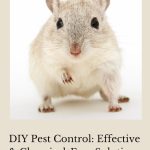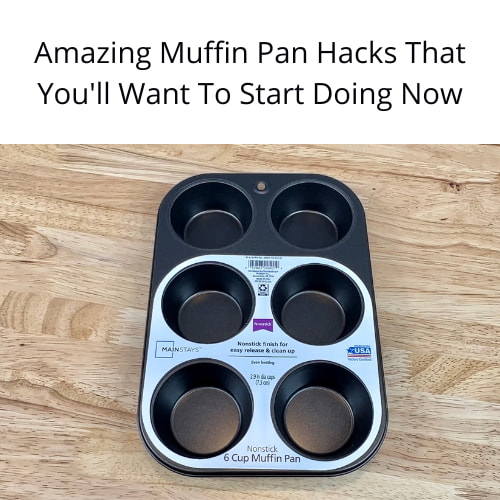DIY Pest Control: Effective & Chemical-Free Solutions
Are pests wreaking havoc in your home, but you’re reluctant to use chemicals around your beloved pets? Look no further! In this blog post, we’ll guide you through some fantastic DIY pest control solutions that are both pet-friendly and effective. Best of all, you can find the necessary items at your local Dollar Tree store. Let’s dive in!
This post may contain affiliate links, I earn from qualifying purchases at no extra cost to you. Click here for my disclosure policy
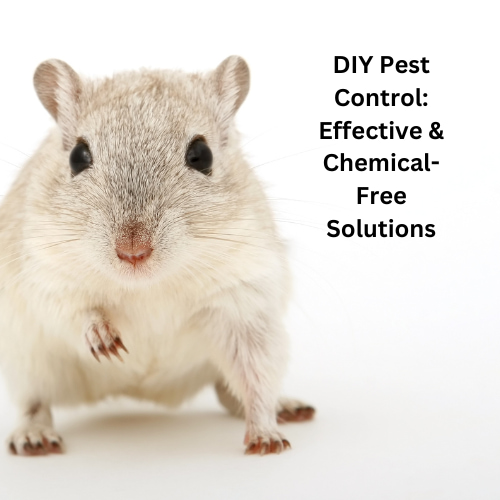
DIY Pest Control Materials Needed
Before we get started, here’s a quick list of the materials you’ll need for these DIY pest control projects:
- Old ice cream bucket
- Heavy-duty paper plate
- Wooden skewer
- Tape
- Bait (e.g., sunflower seeds)
- Basil
- Lemon and lime slices
- Mason jar
- Essential oil (lemon, lavender, or mint)
- Tea light candle
- Cloves
- Dawn dish soap
- Vinegar
- Sugar
- Spray bottle
- 2-liter plastic bottle
- Potato
DIY Pest Control Video
DIY Pest Control
Now that you have your materials ready, let’s begin with the first DIY project.
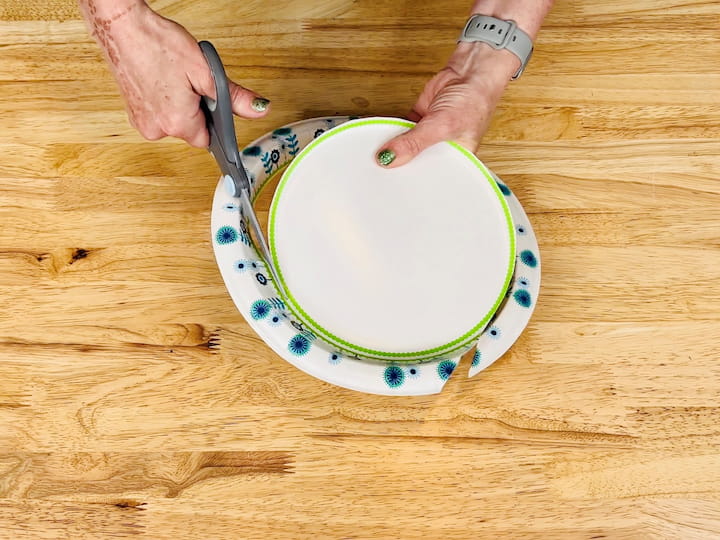
DIY Pest Control Project 1: Mouse Trap
For this project, you’ll create a simple but effective mouse trap using an old ice cream bucket. Here’s how to do it:
Cut the Inside Edge of a heavy-duty paper plate to fit inside the ice cream bucket.
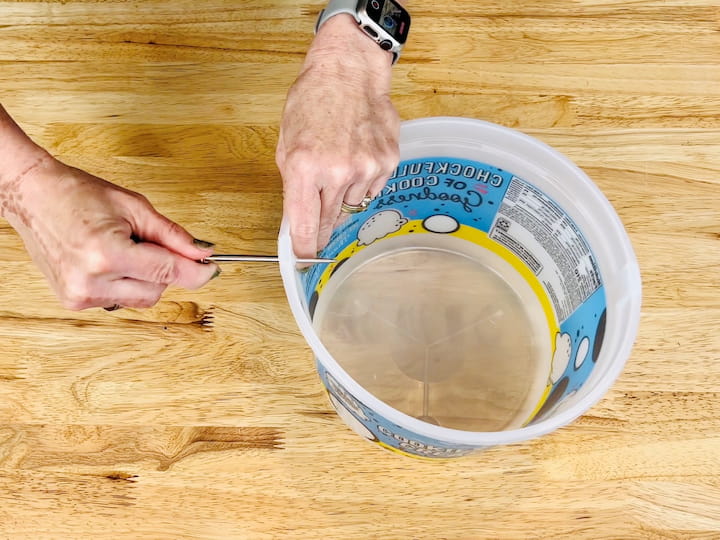
Remove the handle from the ice cream bucket and poke a hole on either side of where the handle was.

Insert a wooden skewer through the holes, ensuring it rotates easily.

Place the paper plate inside the bucket and tape it to the skewer.

Fold up a second paper plate to create a counterweight.
Cut a notch in the ice cream bucket wide enough to accommodate the second paper plate.
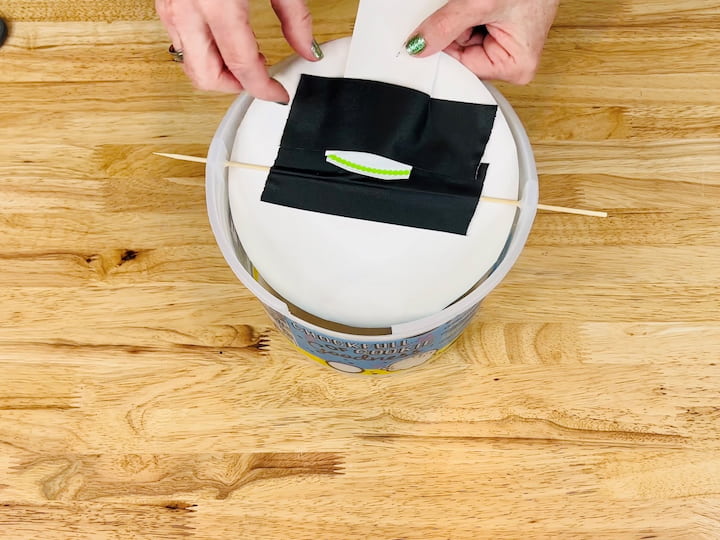
Flip the original paper plate over, tape the second paper plate onto it, and ensure it moves easily.


Add bait (e.g., sunflower seeds) to the bucket and place it in your pantry.
When a mouse (demonstrated here by my plastic wolf) crawls onto the paper plate to reach the bait, it will fall into the trap, and the lid will close, keeping the mouse inside.
For rodent control, this homemade mouse trap can be an effective solution to deal with the problem.
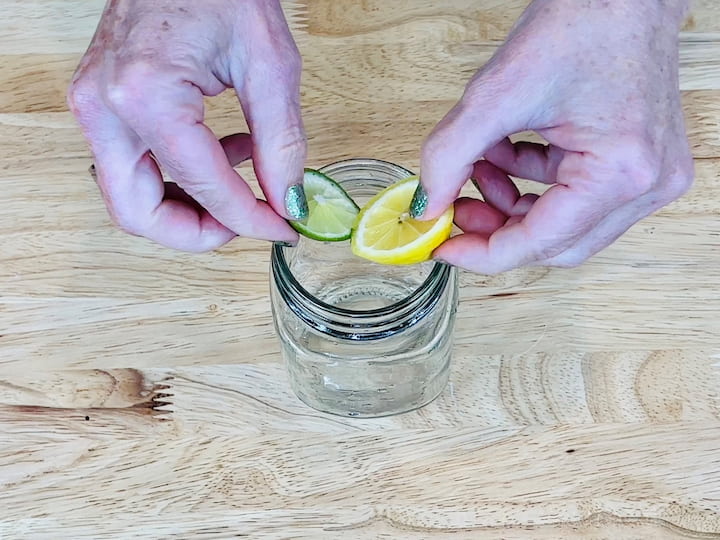
DIY Pest Control Project 2: Basil and Citrus Jar
For this indoor pest control solution, you’ll create a basil and citrus jar. Here’s how:
Cut lemons and limes into slices and place them at the base of a mason jar.
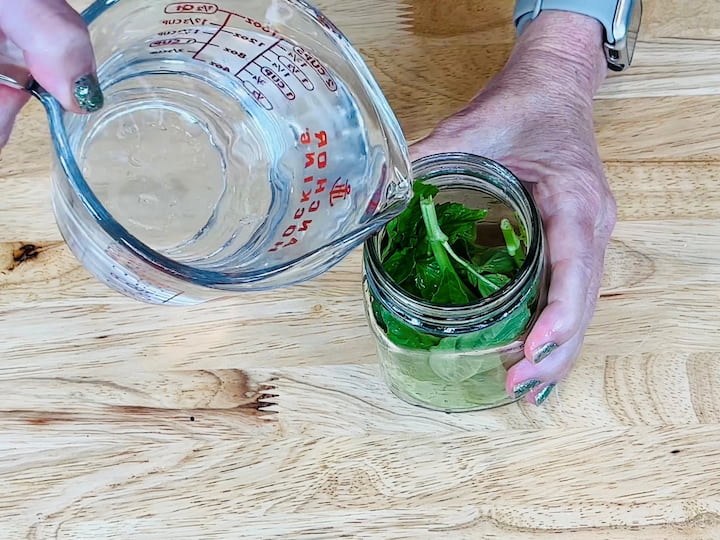
Add a layer of basil on top of the citrus slices.
Fill the jar with water.

Add a few drops of essential oil (such as lemon, lavender, or mint) to the mixture.

Place a tealight candle on top of the jar.
The pests will be repelled by the scents of citrus, basil, and essential oils.
This project can help control insects and bugs in your home, offering a natural and pleasant-smelling alternative to chemical sprays.

DIY Pest Control Project 3: Clove-Infused Citrus
To repel pests using cloves and citrus, follow these steps:
Take leftover lemons and limes and insert cloves into them.
The strong smell of the cloves will repel pests. This method can be especially effective against ants and rodents.
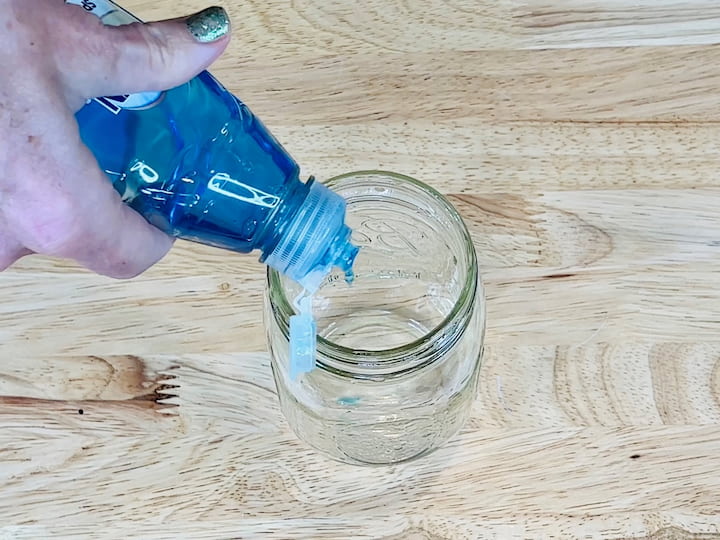
DIY Pest Control Project 4: Gnat Trap
For this project, you’ll create a simple gnat trap using a mason jar. Here’s how:
Place a few drops of Dawn dish soap into a mason jar.

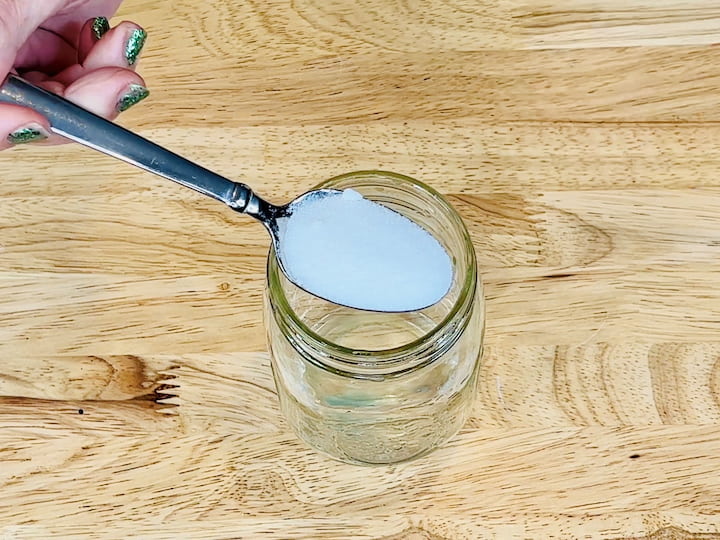
Add one tablespoon of vinegar and one teaspoon of sugar.

Fill the jar with one cup of water.

Cover the top with Saran Wrap, securing it with a rubber band.
Poke small holes in the Saran Wrap to allow gnats to enter but prevent them from escaping.

The gnats will be attracted to the mixture and become trapped inside.
These DIY pest control projects can be placed anywhere in your home to repel pests effectively. They can also be used outside.
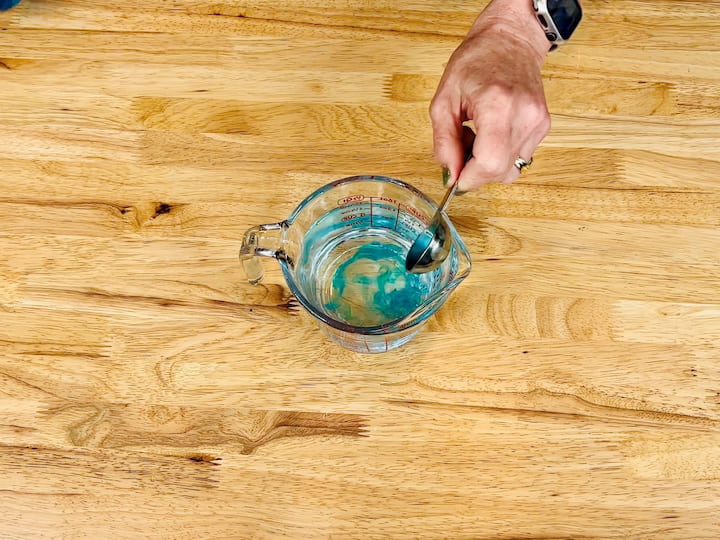
DIY Pest Control Project 5: Dawn Dish Soap Spray
If you have plants infested with pests, this DIY spray will come in handy:
Mix one tablespoon of Dawn dish soap into one cup of water.
Pour the mixture into a spray bottle.

Spray the solution on plants to eliminate bugs.
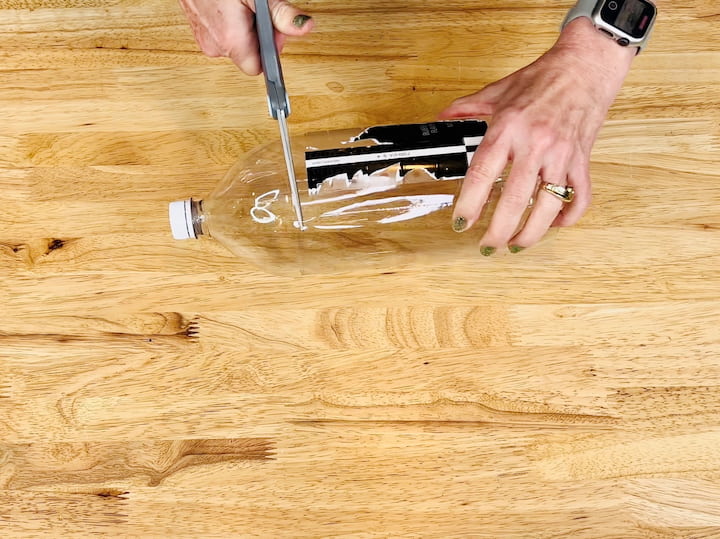
DIY Pest Control Project 6: Bug Trap with Potato
Let’s move on to another effective bug trap using a 2-liter bottle and potatoes:
Take an old 2-liter bottle and remove the label.
Cut the bottle in half, leaving the upper portion slightly larger.

Cut a potato into several pieces. The older the potato, the more effective it will be.
Place the potato pieces inside the bottom half of the bottle.
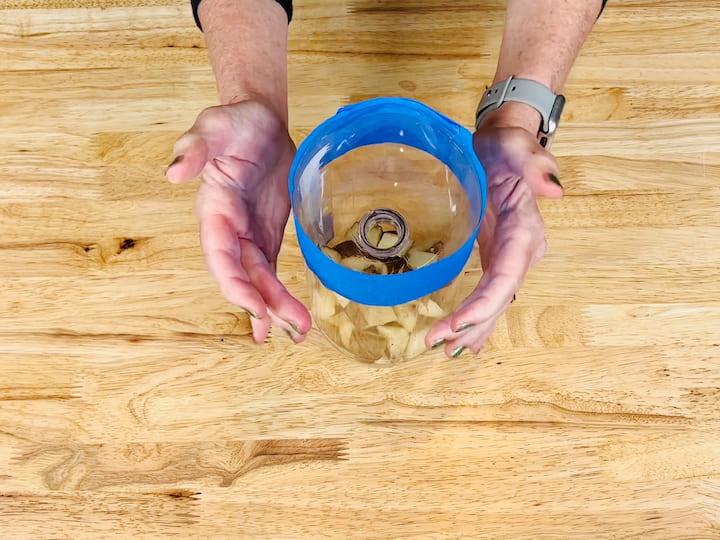
Flip the top half of the bottle upside down and fit it onto the bottom half, creating a funnel shape.
Secure the two pieces together with tape.
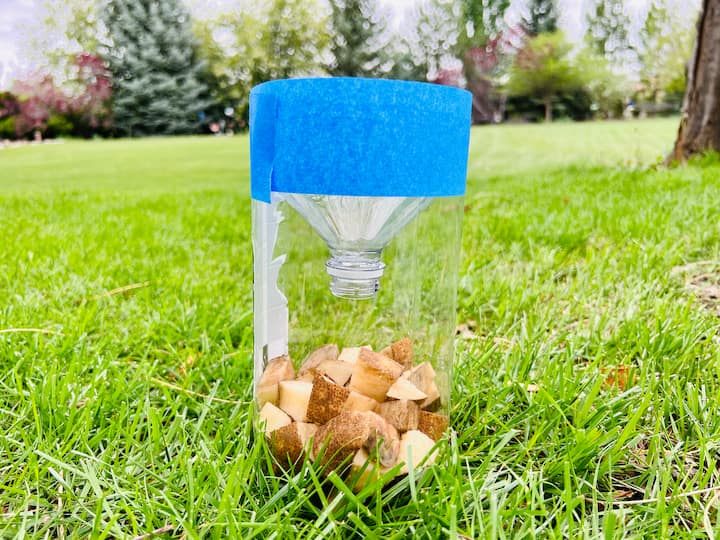
Flies and other bugs will be attracted to the scent of the potatoes and enter the trap.
Once inside, they will be unable to escape.
This DIY bug trap is a simple yet efficient way to control flying insects. Place it in areas where bugs are a nuisance, and watch them get trapped inside.

Amazing Inexpensive DIY Bug Killer, Repellents, and Traps
You can find even more DIY pest control on this post Amazing Inexpensive DIY Bug Killer, Repellents, and Traps, and see below for my Q & A as well as even more pest control options!
Depending on your type of pest you might want professional products. Be careful of some active ingredients outside your home as they can effect pets, bees (pollinators), wildlife, and other animals you might be outside of your home that you don’t want to effect.
We get voles sometimes and they’re similar to moles. They tunnel under your ground and ruin your grass. Do you have any tips for those, let me know if the comments below. I’m still on a mission to get rid of these pests naturally if possible.
DIY Pest Control Video
Shop any of these stores and I receive a small commission at no cost to you.
 Ortho Home Defense Insect K...Shop on Amazon
Ortho Home Defense Insect K...Shop on Amazon Wondercide - EcoTreat Ready...Shop on Amazon
Wondercide - EcoTreat Ready...Shop on Amazon
DIY Pest Control Q&A Section
Is it better to do pest control yourself?
The decision to do pest control yourself or hire professionals depends on various factors, including the severity of the pest problem, your comfort level in dealing with pests, and the specific pest species involved. Here are some points to consider when deciding whether to tackle pest control on your own:
- Cost: DIY pest control methods are generally more cost-effective compared to hiring professional pest control services. Purchasing supplies and implementing DIY solutions can save you money, especially for minor pest issues.
- Convenience: DIY pest control allows you to address the problem at your own convenience. You can choose the timing and frequency of treatments based on your schedule and the needs of your home.
- Safety: DIY pest control methods often prioritize the use of natural and pet-friendly alternatives, minimizing potential risks to your family and pets. However, it’s essential to research and follow proper safety precautions when using any products or techniques.
- Effectiveness: While DIY pest control can be effective for minor infestations or preventive measures, more severe or persistent pest problems may require the expertise of professional pest control companies. Professionals have extensive knowledge, experience, and access to specialized products and techniques that can effectively eradicate pests.
- Complexity of the infestation: Certain pest infestations, such as termites, bed bugs, or large rodent populations, can be complex and challenging to handle without professional assistance. These situations often require specialized equipment, professional-grade products, and expertise to ensure complete eradication.
- Legal restrictions: Some pest control methods and products may have legal restrictions or require certification for use. It’s important to research and comply with local regulations when implementing DIY pest control measures.
- Peace of mind: Hiring professional pest control services can provide peace of mind, especially when dealing with extensive infestations or recurring pest problems. Professionals can assess the situation, implement comprehensive treatment plans, and offer warranties or follow-up services to ensure long-term pest control.
Ultimately, the choice between DIY pest control and professional services depends on your comfort level, the severity of the infestation, and the specific pest species involved. For minor pest issues, DIY methods can be effective, cost-saving, and environmentally friendly. However, for complex or persistent infestations, consulting professional pest control companies is often the best approach to ensure thorough eradication and long-term prevention.
What is the best way to control rodents?
Controlling rodents effectively requires a multi-faceted approach that focuses on prevention, exclusion, and elimination. Here are some key steps to consider when dealing with rodent control:
- Inspect and Seal Entry Points: Conduct a thorough inspection of your home to identify potential entry points where rodents can gain access. Seal any gaps, cracks, holes, or openings in the exterior of your home, including foundation gaps, vents, utility lines, and windows. Use materials such as steel wool, caulk, or hardware cloth to block these entry points and prevent rodents from entering.
- Remove Food and Water Sources: Rodents are attracted to easily accessible food and water sources. Securely store food in airtight containers, clean up spills promptly, and avoid leaving pet food or water bowls out overnight. Ensure garbage cans have tight-fitting lids and regularly remove accumulated debris around your home, as it can serve as a potential food source for rodents.
- Eliminate Shelter and Nesting Areas: Declutter your home, basement, attic, and outdoor areas to reduce hiding spots for rodents. Remove piles of wood, excess vegetation, and debris near your home. Trim tree branches and shrubs that may provide easy access to your roof or windows. By eliminating their shelter and nesting areas, you discourage rodents from staying on your property.
- Set Traps: Traps can be an effective way to capture and eliminate rodents. Snap traps, live traps, or electronic traps can be used, depending on your preference and the severity of the infestation. Place traps along walls, near entry points, and in areas where rodent activity is evident, using bait such as peanut butter or small pieces of cheese. Regularly check and reset traps as needed.
- Use Rodenticides with Caution: If using rodenticides, follow the instructions carefully and handle them with caution. Place bait stations or traps containing rodenticides in areas inaccessible to children, pets, and non-target animals. Keep in mind that rodenticides should be a last resort and used judiciously, as they can pose risks to the environment and non-target species.
- Monitor and Maintain: Continuously monitor for signs of rodent activity, such as droppings, chewed materials, or gnaw marks. Regularly inspect traps and replace bait as needed. If you’re unable to control the rodent population on your own, consider contacting professional pest control services for assistance.
- Professional Assistance: For severe or persistent rodent infestations, it’s advisable to seek professional help. Pest control professionals have the expertise, specialized equipment, and knowledge of rodent behavior to effectively control and eliminate rodent populations. They can assess the situation, implement targeted treatments, and provide recommendations for long-term prevention.
Remember, rodent control requires persistence and a combination of preventive measures, elimination techniques, and regular maintenance. By addressing factors that attract rodents, sealing entry points, and utilizing appropriate control methods, you can effectively control and minimize rodent infestations in your home.
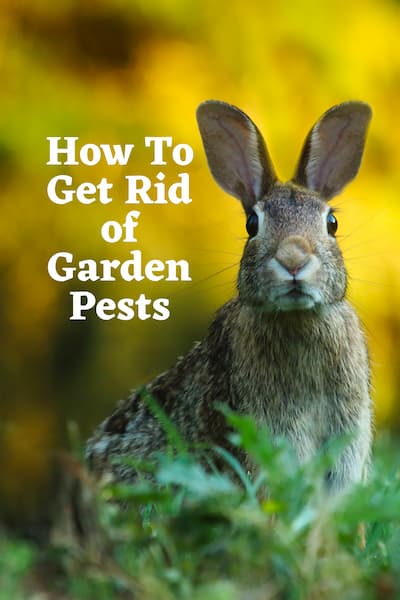


Additional Tips and Resources
For more helpful DIY pest control tips and tricks, check out my tutorial on how to use Irish Spring soap to repel pests indoors and outdoors. It covers various areas, including tables, window sills, garbage cans, and plants.
- Amazing Inexpensive DIY Bug Killer, Repellents, and Traps
- Awesome and Easy Irish Spring Soap and Flies Hacks
- How To Get Rid of Vegetable Garden Pests with These 12 Easy Tips
Share Your Experience and Suggestions
Have you tried any of these DIY pest control methods? Do you have any suggestions or additional ideas? Share your thoughts in the comments below. We’d love to hear from you!

Stay Connected
If you found these DIY pest control solutions helpful, consider subscribing to my YouTube channel and visiting my blog for more valuable content. Don’t forget to like, share, and subscribe to stay updated on future videos.
Thank you for watching, and happy pest control DIY-ing!

